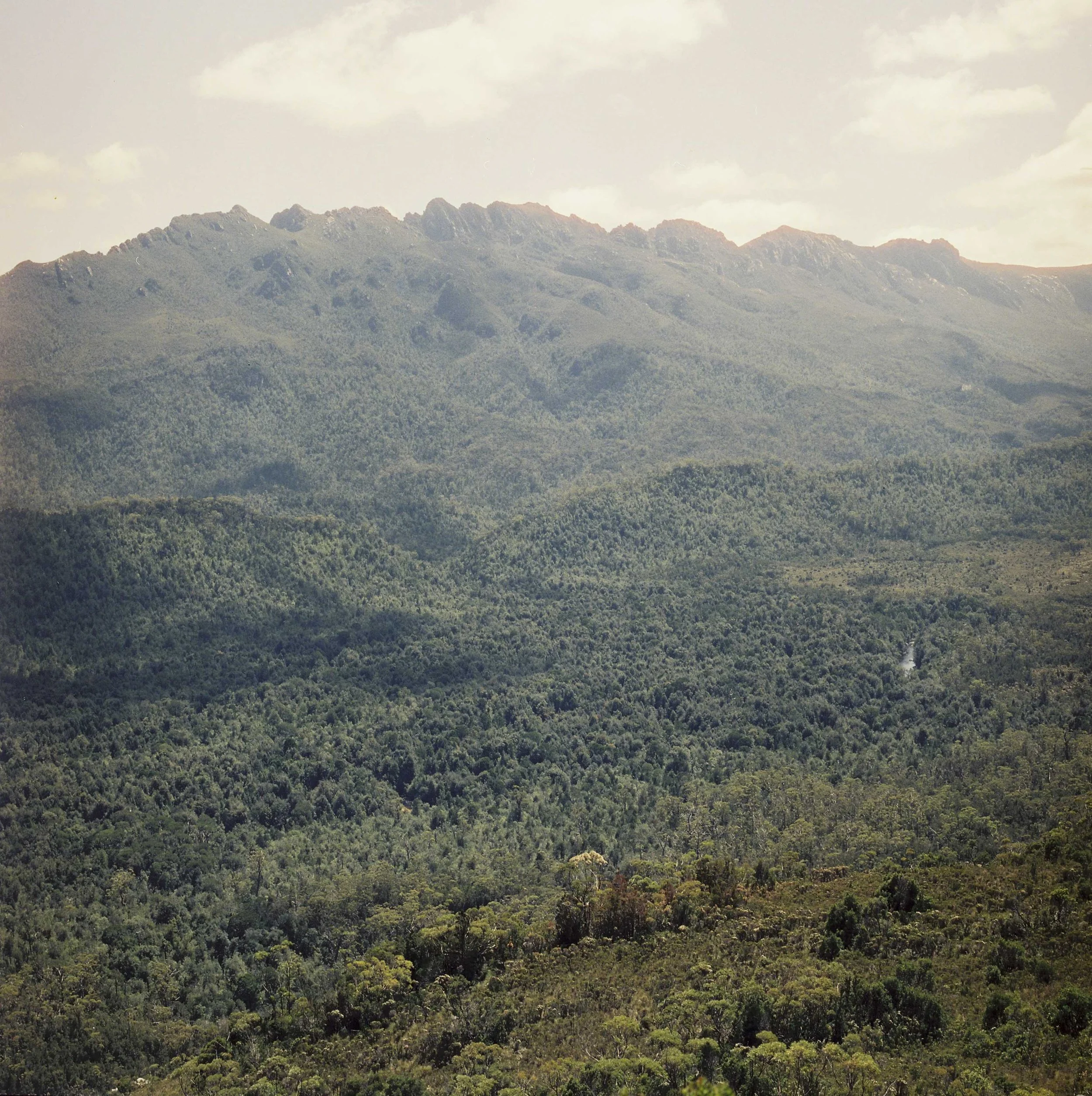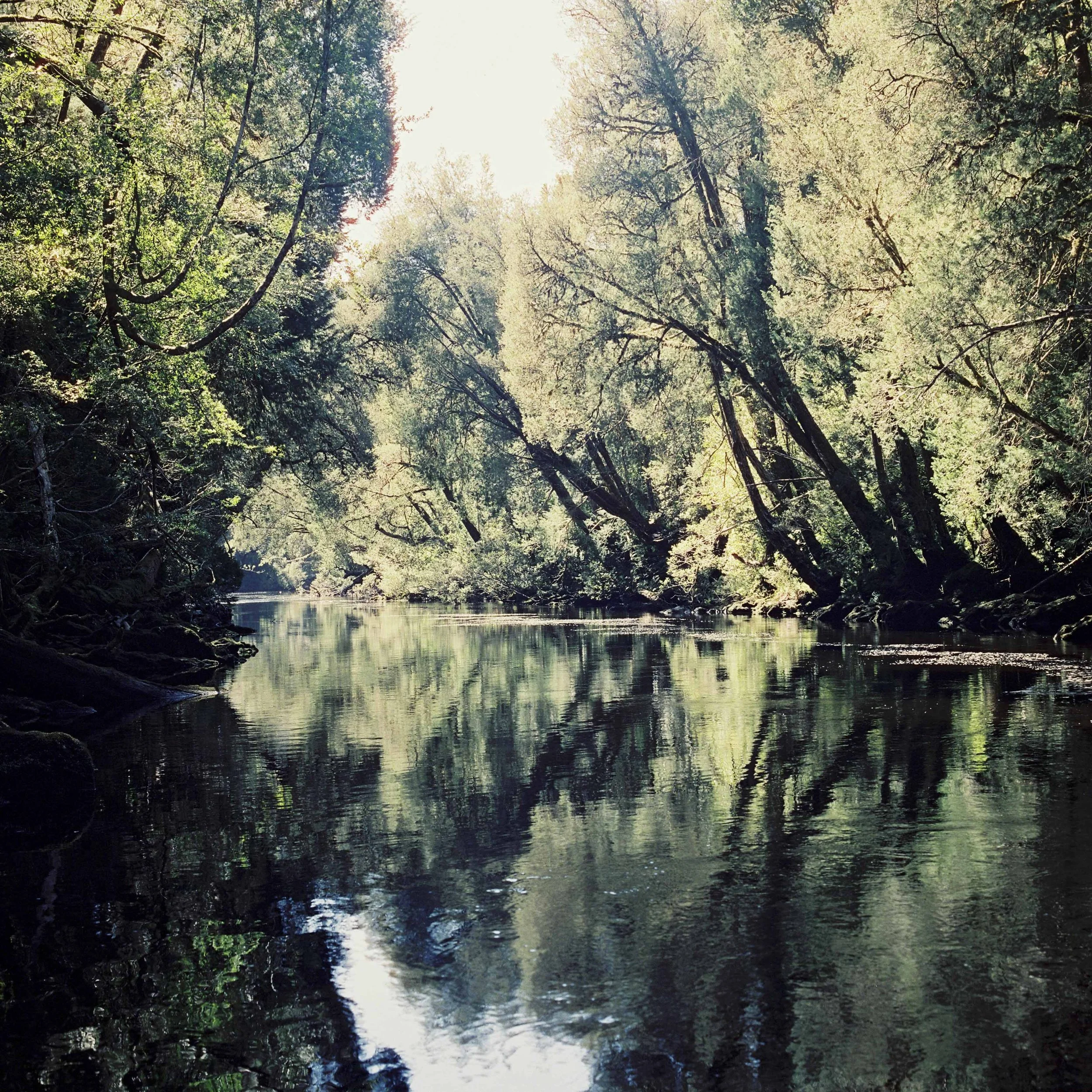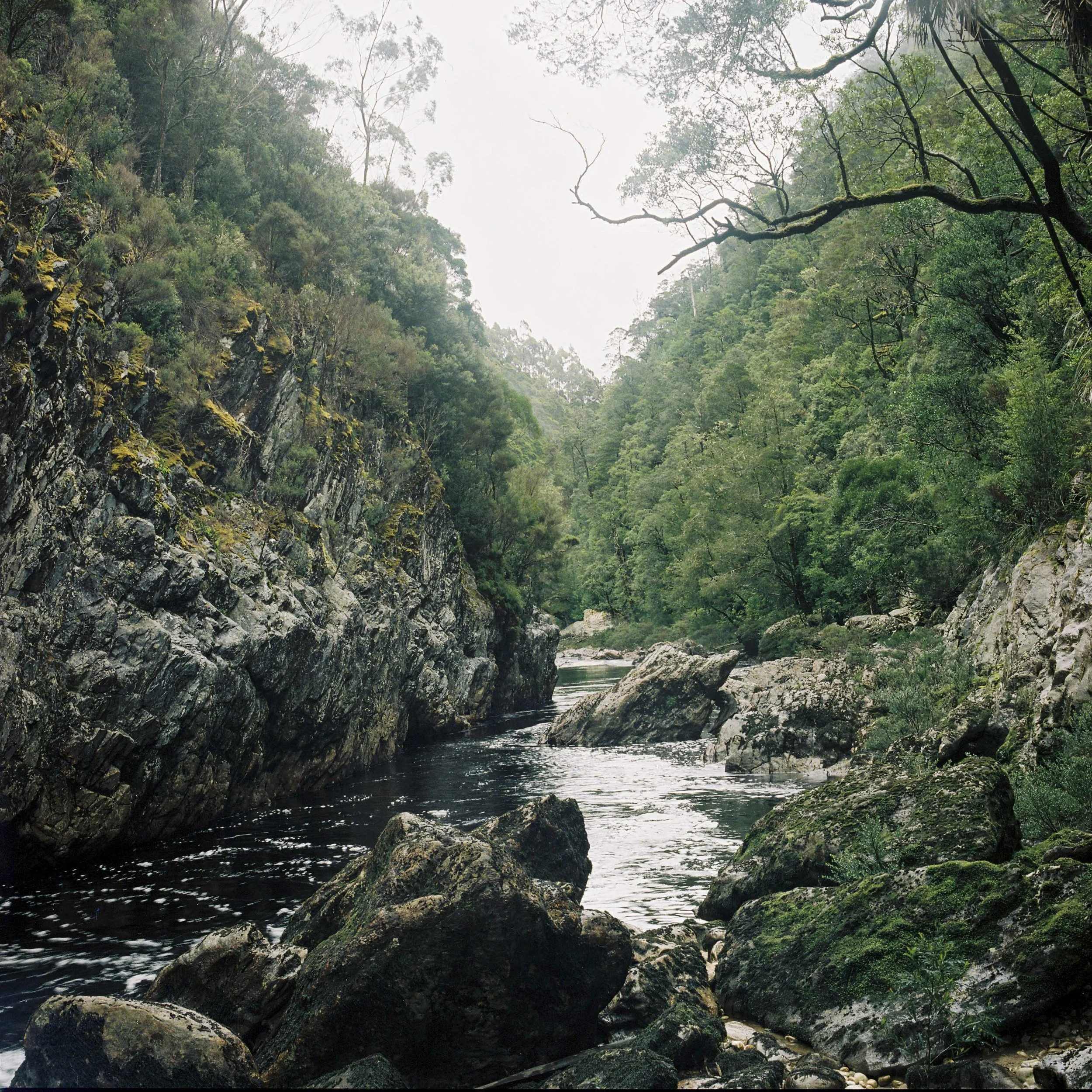…down by the water, the tannin dark water… there grow some Huon Pines.
Mt Humboldt and the Denison River. Hasselblad 500CM, Cinstill 800. Nov 2024.
The Huon Pine is a tree that grows mostly along the waterways of Lutruwita / Tasmania. Quite often they grow right on the banks of the river, leaning out into it. Huon Pines grow slowly; individual trees can live up to 2000 or even 3000 years old. Stands of trees can be much older than this. There is a stand on Mt Read that is thought to have originated from a single male tree, and is estimated to be over 10 000 years old.
The secret to their longevity is a resin that is contained in the wood, methyl eugenol, preventing the wood from rotting and deterring insects from boring into it. The Huon Pine has a distinctive smell, some might say acrid, bitter, even pungent, some might say calming, cleansing.
Huon Pines on the Denison River. Hasselblad 500CM, Cinstill 800, Nov 2024.
Captain James Kelly is credited with ‘discovering’ Port Davey and Macquarie Harbour on his circumnavigation around Tasmania in 1815 in his whaling boat, the Elizabeth. Kelly’s job was to find resources the colony needed.
Kelly named the Gordon River and noted the presence of Huon Pines, by then known for its excellent qualities for boat building. In 1823, there was a penal station established on Sarah Island at the mouth of the Gordon River. Its purpose was to turn convicts into piners and boat builders. The prized timber they sought: the Huon Pines.
The cutting down of Huon Pine was officially banned in the 1960s. Driftwood can still be collected by some commercial operators on the west coast of Tasmania.
The entrance to Marriott Gorge. Hasselblad 500CM, Portra 800, Nov 2024.
These trees are more than just a resource. They are living beings, arguably some of the oldest living beings on Earth. They have survived from a time that was likely colder and wetter, making them vulnerable to fire. With the increase of severe wild fire events caused by dry lightning strikes and erratic rainfall, the future of these trees, like so much of Tasmania’s wild character, is uncertain. Their future is linked to the future of Tasmania’s rivers.



